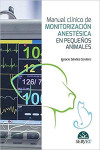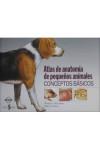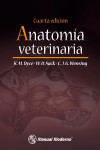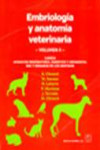MORPHOLOGICAL MOUSE PHENOTYPING
Anatomy, Histology and Imaging
Jesús Ruberte París / Ana Carretero Romay / Marc Navarro Beltrán
Datos técnicos
- ISBN 9788479035006
- Año Edición 2016
- Páginas 614
- Encuadernación Tapa Dura
- Idioma Inglés
Sinopsis
More than 2,200 original images have been specifically produced for this book in the Mouse Imaging Platform (Center for Animal Biotechnology and Gene Therapy, Universitat Autònoma de Barcelona).
These images show the anatomy, histology and cellular structure of mouse organs.
In addition, correlative X-ray, Computed Tomography, Magnetic Resonance and Ultrasound images complete this integrative vision of the mouse morphology.
Classical anatomical techniques such as conventional dissection, skeletal preparations, vascular injections, as well as histological, immunohistochemical and electron microscopy techniques have been employed to characterize the mouse morphology.
Disease animal models are fundamental in research to improve human health. The success of using genetically engineered mice to evaluate molecular disease hypothesis has encouraged the development of massive European and global projects making the mouse the most used animal disease model. Laboratory mouse populations are straining the housing capacity of pharmaceutical and biotechnology companies, as well as public research institutions. However, the scientific community lacks sufficient expertise in morphological phenotyping to effectively characterize and validate these animal models.
The mouse displays fundamental morphological similarities to humans. However, a mouse is not a man. Here we present a complete and integrative description of mouse normal morphology.
The main characteristics of this book are:
More than 2,200 original images have been specifically produced for this book in the Mouse Imaging Platform (Center for Animal Biotechnology and Gene Therapy, Universitat Autònoma de Barcelona).
These images show the anatomy, histology and cellular structure of mouse organs.
In addition, correlative X-ray, Computed Tomography, Magnetic Resonance and Ultrasound images complete this integrative vision of the mouse morphology.
Classical anatomical techniques such as conventional dissection, skeletal preparations, vascular injections, as well as histological, immunohistochemical and electron microscopy techniques have been employed to characterize the mouse morphology.
This book, basically an atlas, but also containing explanatory diagrams and text, guides the reader through normal mouse anatomy, histology and imaging, and is aimed for mouse researchers as well as veterinarian and human pathologists.
Índice
Foreword
Preface
List of abbreviations
1. Introduction
2. Osteology
3. Arthrology
4. Myology
5. Digestive tract
6. Respiratory apparatus
7. Urinary organs
8. Male genital organs
9. Female genital organs
10. Anatomy of development
11. Circulatory System
12. The endocrine glands
13. Nervous System
14. Eye and related structures
15. Vestibulocochlear organ
16. Common integument
Bibliography
Index
- ¿Quiénes somos?
- Gastos de envío
- Política de privacidad
- Políticas de devolución y anulación
- Condiciones Generales de contratación
- Contacto
2025 © Vuestros Libros Siglo XXI | Desarrollo Web Factor Ideas










